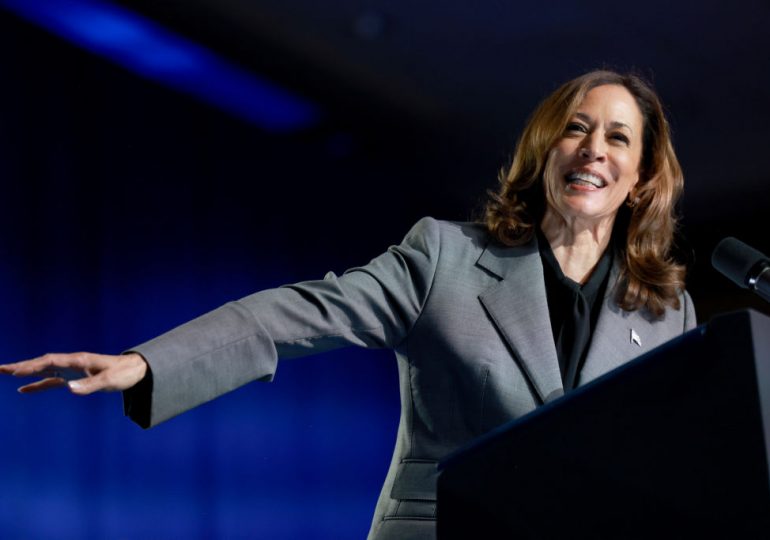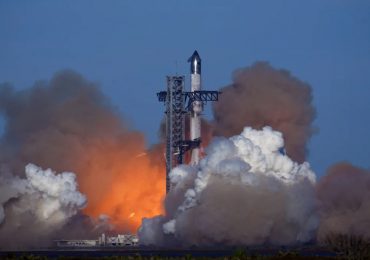This article is part of The D.C. Brief, TIME’s politics newsletter. Sign up here to get stories like this sent to your inbox.
For those living inside the bubble of presidential politics, the last three months could give one a sense of vertigo. Beyond the barrage of history-making moments—Joe Biden experiencing the most embarrassing senior moment ever on live TV; Donald Trump surviving not one, but two assassination attempts; Kamala Harris absolutely dominating in her debate against Trump—things just seemed to feel different.
[time-brightcove not-tgx=”true”]
But as the polls continue to show an incredibly tight race, it was entirely reasonable to say that even swapping candidates wasn’t going to mean much in a nation so deeply divided on partisan lines.
Well, NBC News is out with a poll taken Sept. 13-17 and one question in particular stands out as codifying the shift in the race’s vibes, if not the fundamentals. Since July, Harris’ favorability among voters increased by 16 points, the biggest jump NBC’s polling unit has seen in any politician’s favorability since President George W. Bush’s spike right after the Sept. 11, 2001, terrorist attacks. Pre-Biden’s exit, Harris’ polling was underwater—with 50% of the country having an unfavorable view, and only 32% favorable. Now, the same poll finds 48% view her positively and 45% percent negatively—a dramatic turnaround in a relatively short window.
Here, context really matters. NBC News began polling on Harris as a national figure in August of 2020, when Biden picked her as his running mate. In all that time, she has never seen numbers like this. The highest favorability rating on the books dates to October of 2020, when she had a 42% positive and 38% unfavorable verdict. As Vice President, her best number came in her first month in the job, when an even 41% split in January 2021.
Favorability is an imperfect proxy for a candidate’s ability to turn out voters, but it can ultimately make a world of difference, especially in a race this close. For another dash of context, at this point in 2016, NBC News had then-nominee Hillary Clinton carrying positive vibes from just 37% and Trump rocking an even worse 28%. In September four years later, Trump carried a 41% positive view while Biden edged him out with 43% favorables in the NBC News polling.
In this cycle, any number of explanations can be simultaneously true here. Democrats had spent months in a not-so-quiet gnashing over Biden’s prospects of winning and serving another term. The floodgates burst after a calamitous debate performance showed Biden halting and uneven on stage with Trump. Harris’ swap and exceptional re-introduction washed aside any comparisons to Veep’s Selina Meyer, as TIME’s Charlotte Alter explained in a magazine cover story here. With the ballots redrawn, suddenly Trump is the old guy who seems a step behind, as he continues to tout conspiracy theories that are souring even some die-hard Republicans on the prospect of a sequel.
On that last point, the NBC News data tells a pretty clear shift. When pollsters in July put in the survey a hypothetical about how Harris might fare if she were running as the nominee, things looked grim for Democrats. Trump still had an advantage over Harris, 47% to 45%. Now that it’s no longer a possibility but very much the reality, Harris has claimed the advantage over Trump, 49% to 44%. In a relatively short gap since Biden took his leave, there’s been a seven-point swing in Democrats’ favor. (Other polls suggest she’s not that far ahead.)
One of the biggest factors in the Harris surge has been the question of if she can do the job. When Biden was still in the race, a paltry 21% of voters thought he was more physically and mentally fit to fill the role than Trump. Now, 54% of voters think Harris can get it done. Maybe the amateurs cosplaying as medical experts were unfair in their verdicts of Biden’s abilities, but once the image was set, it proved all but impossible to shake.
For its part, Harris’ campaign looked to remind supporters over the weekend that they’re going to keep campaigning as underdogs, particularly as Trump appears to be in better shape in the battleground states than he is nationally. Both top hands at headquarters and the candidate herself stress that this is still a campaign running within the margin of error, and they need to run at least two or three points ahead nationally to have a shot at winning in an Electoral College where Republicans have a natural advantage.
So as the campaign hits its final stride of six weeks until Election Day—and voters in some states are already casting ballots—it’s worth appreciating just how much this race has shifted in ways great and small. While it’s still the closest race in the last 60 years, it is not the same tight race it was three months ago. The ground really did shift dramatically. But here’s the thing about ground: once it goes wobbly, it gets easier to move.
Make sense of what matters in Washington. Sign up for the D.C. Brief newsletter.
Leave a comment








